Any player in the QSR space will tell you that, beyond keeping a close eye on margins, the most important factor for success is customer engagement and satisfaction. One of the easiest and best ways to keep customers coming back is to ensure that they leave the restaurant happy, whether they are served inside the restaurant, or in the drive through. It’s important to note, however, that it’s estimated that as much as 70% of all QSR revenue comes via the latter, and creating an experience at the drive-through window that is, fast, streamlined and frustration-free is the key to customer happiness. Today, we continue the drive-through digital menu boards discussion and detail additional advantages, as well as what it takes to ensure a successful deployment.
Let’s start with this fact: According to Lyle Bunn, a signage industry consultant and strategy architect, 80% of adults have seen digital signage in the past month, and 70% of them have made an unplanned purchase because of it. That information alone should be enough to send QSR decision makers out the door and running to us at RedyRef. But just in case it’s not, let’s quickly break down those numbers. Bunn’s statement means that out of every 80 adults who have seen a digital sign in the last month, 56 have made a purchase because of having seen it. That makes digital signage, including digital menu boards, hugely influential as part of the selling process. And wouldn’t you know, one of the most effective uses of digital signage is at the drive-through for “pre-selling,” a concept first brought to market by Burger King, long before digital menus were even a twinkle in QSRs’ eyes.
What is pre-selling? And how does it influence customer purchasing?
Preselling is the process of placing signs along the ordering path of the drive-thru that advertise specials or share other information about the menu, including upsells and promotions. It works to influence customers in several ways. One is that it gives them a focal point, and helps them begin to consider their options before they even get to the menu board, let alone an ordering window. Second is that, believe it or not, it can help lower customer anxiety. King-Kasey, the firm who brought the concept of pre-selling to BK, found via their research that customers often panicked when asked “Can I take your order?” Pre-selling signs — in BK’s case, yard signs — helped customers make decisions faster and earlier, leading to a quicker ordering process. These signs also added space for promoting high-margin items or specials, as well for upselling sides, soft drinks or desserts.
All of the above still holds true today for restaurants using digital pre-selling signage at their drive throughs, whether Starbucks wants to start ramping up excitement over its (in)famous Pumpkin Spice Latte before it even goes on sale, or McDonald’s hopes to appeal to the more health-conscious among us by featuring salads or wraps instead of greasier burger fare. Pre-selling with digital signage can help sell not just product, but also the restaurant, by changing the way it chooses to present itself to the world. Healthy? Fun? Modern? Youthful? Digital pre-selling signage can do all of this and more.
While there are clearly challenges to planning and deploying an outdoor digital menu board program for drive-thrus, the process does not need to be as difficult or complicated as it may first seem. The key to success is partnering with an experienced, vertically-integrated manufacturer like RedyRef. Come back next week when we’ll continue this discussion, or, contact us today at (800) 628-3603 today or request a quote online and we’ll be with you every step of the way to ensure that your program meets every one of your business’ unique needs, from indoor digital boards to outdoor, weatherproof dynamic displays.
